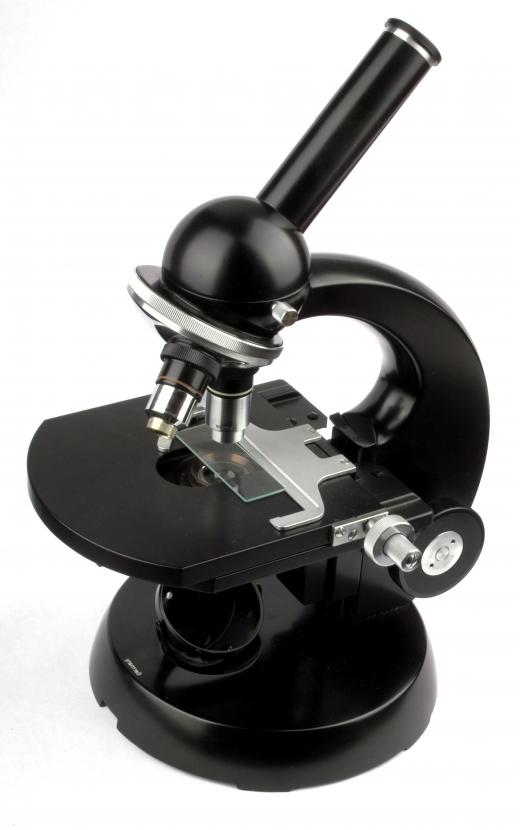What are the Different Types of Optical Microscopes?
 Mary Elizabeth
Mary Elizabeth
Microscopes are instruments that allow the user to see things on a larger scale by producing an accurate enlarged image of small objects. Microscopes are classed by the way in which the image is enlarged. Types of microscopes include acoustic microscopes, electron microscopes, X-ray microscopes, and optical microscopes—also called the light microscope—the subject here. Optical microscopes use glass lenses to produce the enlarged images. They come in several different configurations: simple optical microscopes use only a single lens, while compound optical microscopes combines two or more arrays of lenses.
A simple microscope is also known as a loupe. It consists of a single or compound lens. Examples of a simple lens are a magnifying glass, a jeweler’s lense or loupe, and a reading glass. Several types of aberration in a single lens are possible. Each of these effects the quality of the image in a different way. Chromatic aberrations distort color. Spherical aberration distorts the focus of the periphery of the image. Distortion produces curves where the image is straight.

A compound lens simple microscope is different than a compound microscope. A compound lens is an array of simple lenses that share a common axis. A compound lens fixes some aberrations that can occur when only a single lens is used, and it can magnify at a higher power, as well.
A compound microscope has at least two lens arrays, which allows for greater magnification than a simple microscope is capable of. One of these arrays is the objective. It is positioned near to the object under examination and has a short focal length. The eyepiece, also known as the ocular, picks up the real image formed by the objective and creates a virtual image.

The basic form of the compound optical microscope is monocular. There are two types made for two eyes. In one case, a single objective is used with a pair of eyepieces, creating a two-dimensional view that can be seen with both eyes, and is therefore binocular. A stereoscopic microscope, however, has not only two eyepieces, but two objectives as well, so that the object appears three-dimensional.

Compound optical microscopes were invented by three Dutch makers of eyeglasses at the end of the sixteenth century. It was this type of microscope that was used about 70 years later by Robert Hooke in his demonstrations for the Royal Society. It was about ten years after Hooke began his demonstrations that Antonie van Leeuwenhoek began to use hand-made simple optical microscopes to observe freshwater microorganisms, and the field of microbiology had its beginnings.
AS FEATURED ON:
AS FEATURED ON:















Discuss this Article
Post your comments